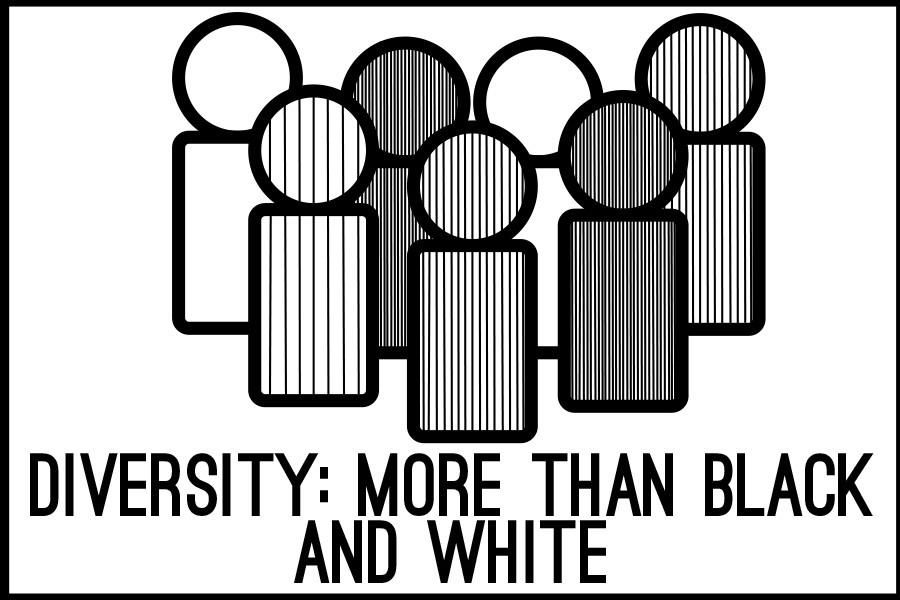Staff Editorial: Diversity: More than black and white
In our recent issue of The Express, BVNW community members reflect on their experiences as racial minorities. With the diversity assembly tomorrow, the newspaper staff stresses the importance of not only recognizing where diversity exists at BVNW but also understanding the stories under the surface.
February 4, 2016
If you walk into a room at BVNW with 20 people, chances are 15 of them will be white.
In a school where 75.5 percent of students are white,* diversity does not appear to be the norm. We often claim BVNW lacks diversity because, on a physical level, we look relatively homogenous.
The issue is, when we think of diversity, we tend to think of the predetermined, physical aspects of the word. We think of skin color, dress, accent and language. We need to stop seeing diversity as an invariable thing. Sure, skin color is our first signal of that difference, but it requires a wholehearted effort to understand the identity that exists under that first layer – what it means to carry a title that “isn’t white.” It means sitting down with your friends and asking questions like, “what is the hardest part about balancing your culture?” and “what are things most people are ignorant about related to your identity?”
We are naturally drawn to people we relate to and people similar to us. We even tend to subconsciously favor and trust those with faces similar to ours, according to a study published by the Royal Holloway University in London. It’s easy to find “the people like us” in school, especially if that is the majority, and if we inherently feel comfortable with them. But when we absorb different cultures and lifestyles, we will be closer to gaining a level of depth we won’t gain by sticking to what is close and comfortable.
We have to take it upon ourselves to seek out the people, places, experiences, food and events that will expand our understanding of different lives as much as we can and expose us to a variety of racial, cultural, social, economic and religious backgrounds.
To get to the depths of the differences around us, we must push ourselves to understand not only the perks of a unique identity, but also its struggles.
It means asking your friend’s family not just about the Diwali festival coming up, but also what it means to celebrate it in America versus India. It means asking your black friend what the “talk” about police officers is about – and why their parents feel the need to have it. It means asking people with different opinions and perspectives about the events in their lives that shaped their unique understanding of the world.
Ultimately, having an Indian friend or a black friend is not a justification for being cultured – and neither is going to a school with an apparent lack of diversity a justification for being uncultured. It is our responsibility to take a step forward, dig a little deeper and take the time to connect with the beauties and struggles of lives that aren’t ours. Whether it’s trying that homemade baklava or hearing a Pakistani friend’s struggle with racism, we can all take a few moments to venture out of our comfort zone.
After all, those unlike us do it every day by eating meals they aren’t used to, speaking in a language their parents are unfamiliar with and talking about a God they may not believe in. Sure, they may have had a choice, but so do we in taking a minute to understand their side of the story when they are embracing ours.
We can’t change the fact that we don’t attend a very racially diverse school or the fact that we live in affluent neighborhoods without much socio-economic diversity. However, we can’t use that as an excuse to be uncultured. Just because you’re white or all the people around you are white doesn’t mean you can’t consciously engage with the diversity around you in all the ways it exists – it exists in the stories of those who come from different parts of the world, even in the different religious and political views we hold, the different life paths that have shaped us and our sexual identities, too. And the diversity we appear not to have also lives under the physical layer of even the people who look like us.
*According to the Kansas State Department of Education



Joan Baird • Feb 5, 2016 at 9:33 am
Well said!